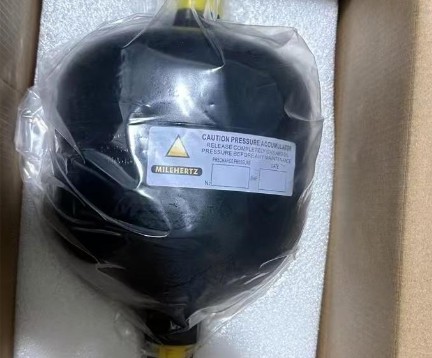
A pulsation damper is a device designed specifically for use in fluid systems. Its core functions are to reduce shock, dissipate energy, and smooth out flow pulsations. Its basic construction usually includes a housing, an elastic medium, and one or more connection ports. These components work together to achieve their intended functions. The housing provides structural support and protects the elastic medium inside from damage by the external environment. The elastic medium is usually a bladder or spring, etc., which is used to store and release energy. In a bladder-type pulsation damper, the bladder is filled with an inert gas that compresses or expands when the fluid pressure changes. The connection ports allow fluid to enter and exit the pulsation damper and are usually connected to the pipeline of the fluid system.
When the pressure or flow in the fluid system changes, the elastic medium in the pulsation damper will deform accordingly, thereby absorbing or releasing energy. This energy storage and release process helps to reduce vibration and noise in the fluid system.
The shock absorption mechanism of the pulsation damper is mainly based on its working principle and internal construction. In some parts of the fluid system, the flow may produce pulsations, that is, periodic changes in flow. When flow peaks occur, the bladder inside the pulsation dampener is compressed, absorbing a portion of the fluid. This helps reduce flow peaks and pressure fluctuations in the system.
When flow valleys occur, the bladder inside the pulsation dampener expands, releasing previously stored fluid back into the system. This helps replenish pipeline flow and reduce insufficient flow in the system. By continuously absorbing and releasing fluid, pulsation dampeners can smooth out flow pulsations and make the flow of fluid systems more stable. Flow pulsations are often accompanied by vibration and noise. By slowing down flow pulsations, pulsation dampeners help reduce vibration and noise levels in the system. Vibration and noise in fluid systems can cause damage to downstream equipment. By slowing down these harmful effects, pulsation dampeners help protect the normal operation and extend the service life of downstream equipment.
Pulsation dampeners have significant effects and advantages in fluid systems:
Improve system stability: By slowing down flow pulsations and reducing vibrations, pulsation dampeners help improve the stability of fluid systems.
Extend equipment life: By reducing damage to equipment caused by vibration and noise, pulsation dampeners help extend the service life of downstream equipment.
Improve pump efficiency: Pulsation dampeners smooth the fluid pulsations caused by positive displacement pumps, thereby increasing the volumetric efficiency of the pump.
Reduce energy consumption: Pulsation dampeners help reduce energy consumption in fluid systems by reducing pressure fluctuations and flow pulsations in the system.
Enhance system reliability: The use of pulsation dampeners helps to increase the reliability of fluid systems and reduce failures and downtime caused by vibration and noise.